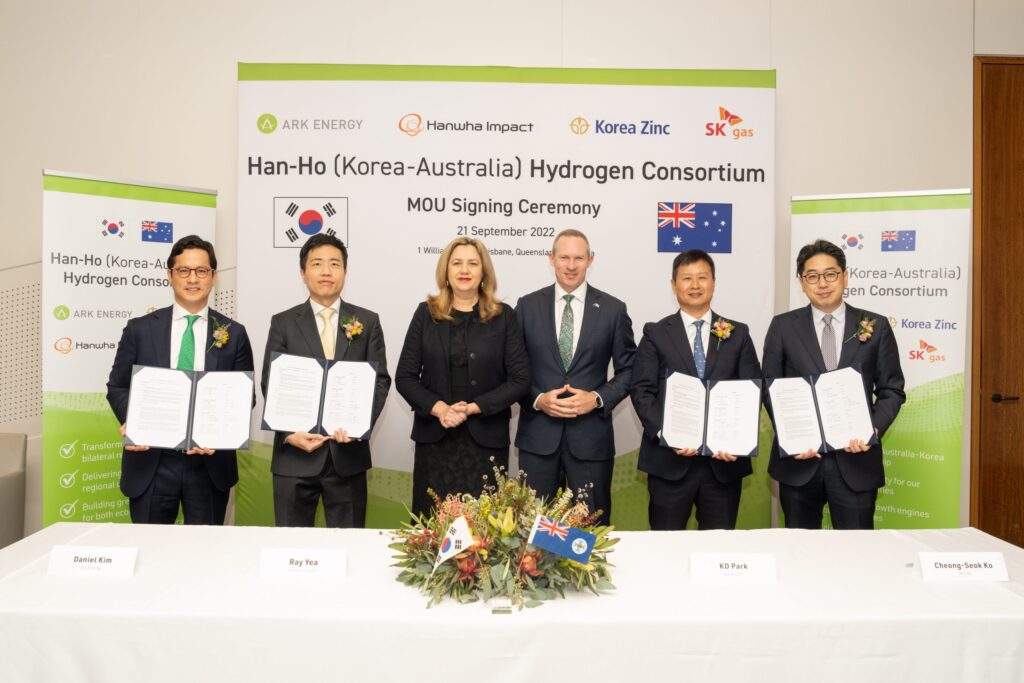Building a renewable ammonia supply chain between Australia and Korea
By Julian Atchison on September 29, 2022
Korea Zinc, Hanwha Impact, SK Gas and Ark Energy

The four organisations (three South Korean and the Australia-based Ark Energy) have joined together to form the Hanguk-Hoju Hydrogen (Han-Ho H2) consortium. The partners will work together to build a million-tonne-per-year renewable ammonia supply chain between the two countries by 2032.
Ark Energy’s renewable energy portfolio in Queensland (including the Collinsville Green Energy Hub, with a potential generation capacity of up to 3,000 MW) will be leveraged for production, with the three South Korean organisations acting as offtakers. The consortium estimates the renewable ammonia demand of the three will be at least 2 million tonnes per year by 2030.
As the first major refiner in the world to join RE100, this MoU aligns with our commitment to power our global operations from 100% clean energy by 2050. We look forward to working with our partners to further unlock Australia’s potential to become a large-scale producer and exporter of green hydrogen and its derivatives including green ammonia.
Korea Zinc Vice Chairman Yun B. Choi in Ark Energy’s official press release, 21 Sep 2022
With Korea Zinc looking to decarbonise their global metal refining operations with a supply of clean electricity & fuel, investment firm Hanwha Impact is exploring the development of ammonia cracking and gas turbine conversion technologies, with a view to utilising hydrogen & ammonia fuel. SK Gas rounds out the consortium as a current Korean gas importer with significant experience in import/export infrastructure, maritime shipping and market development. South Korea is currently the world’s third largest ammonia importer, and the Korean Institute of Energy Research estimates that national demand will be over 21 million tonnes each year past 2030.
New 10-year energy plan for Queensland
The announcement comes as the Qld state government launches an ambitious new energy plan. Among the headline features are: AU$62 billion of private and public investment, a new renewable energy target (80% by 2035), replacing existing coal power generation with pumped hydro capacity (including the “Battery of the North” at Burdekin), extensive grid upgrades, new energy hubs and a new Renewable Energy & Hydrogen Jobs fund to help build the necessary workforce. The plan will support the addition of 20-plus GW of renewable energy generation to Qld’s grid.